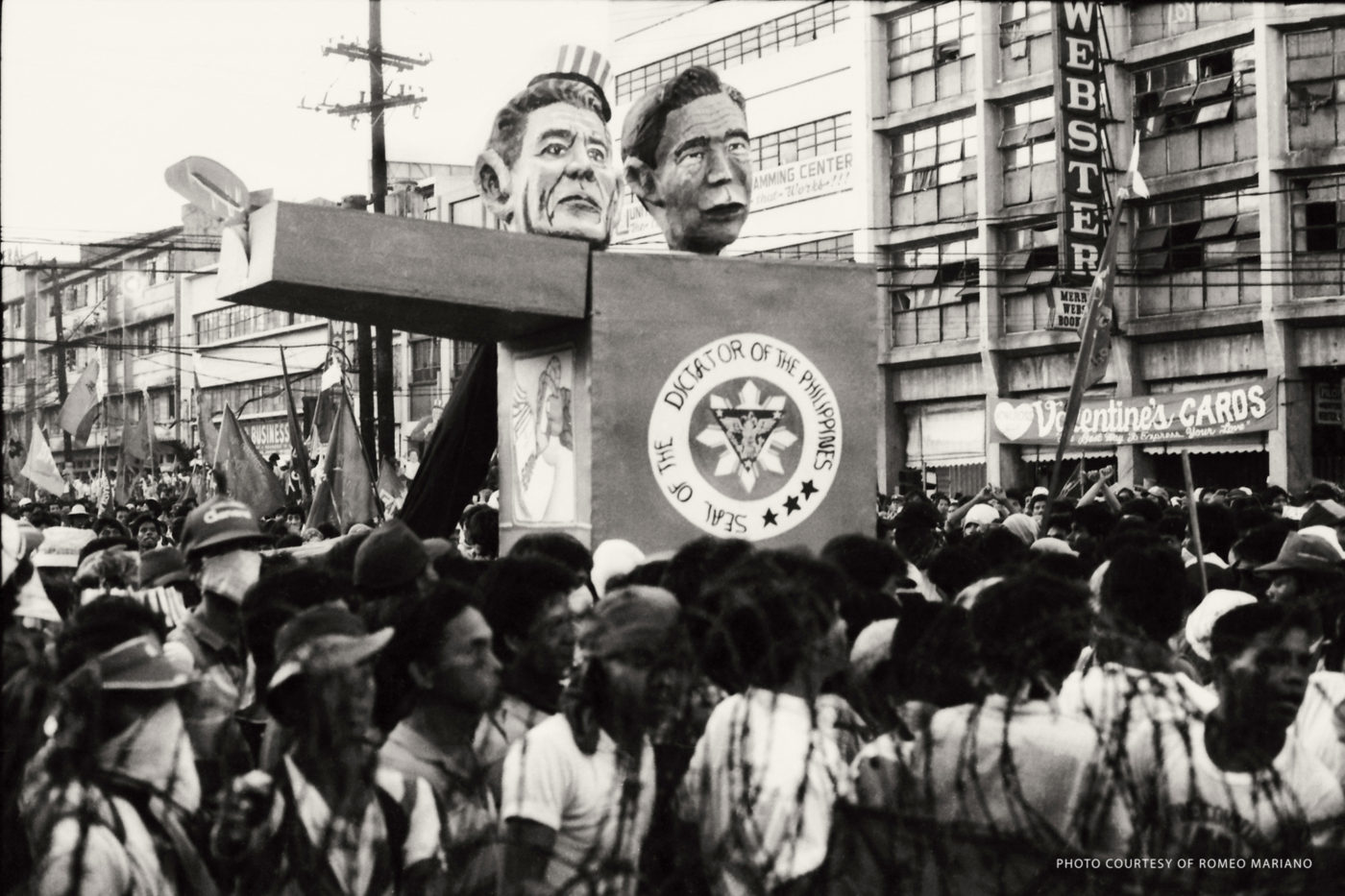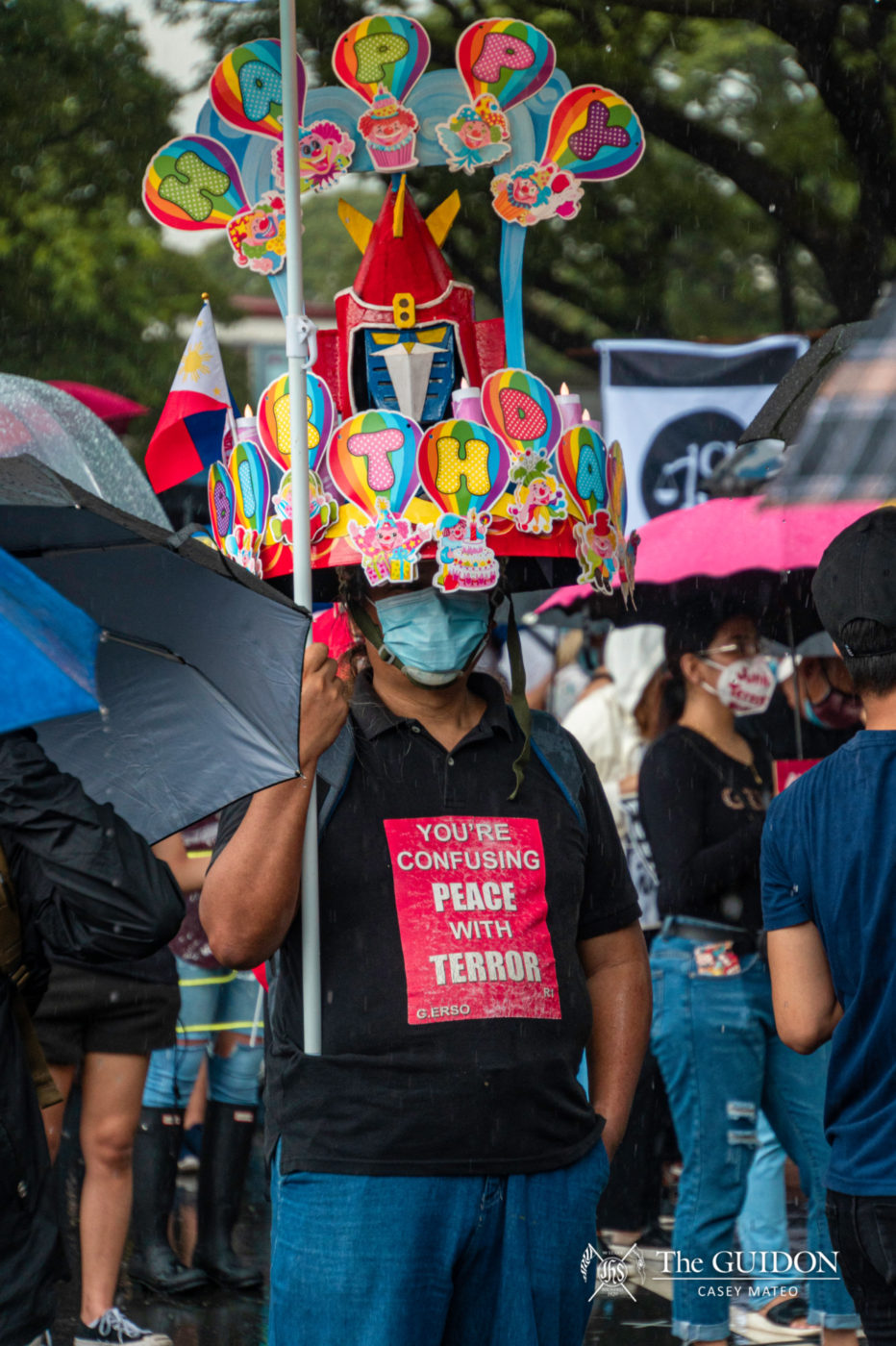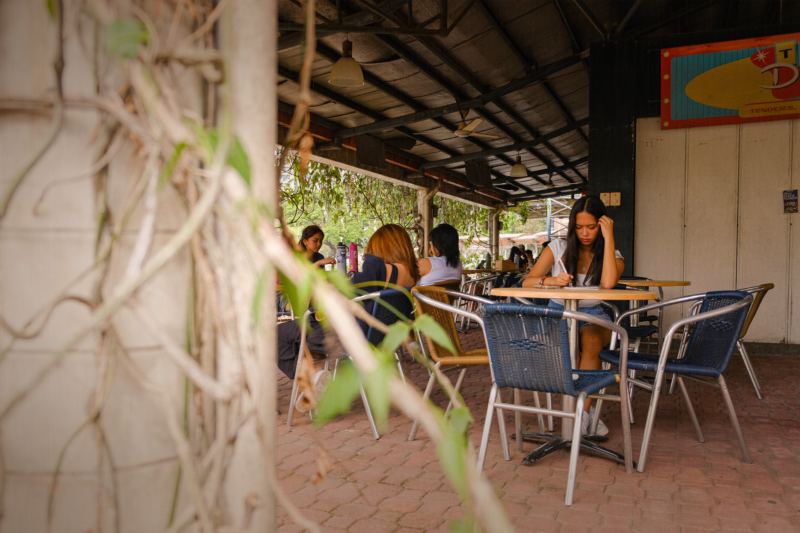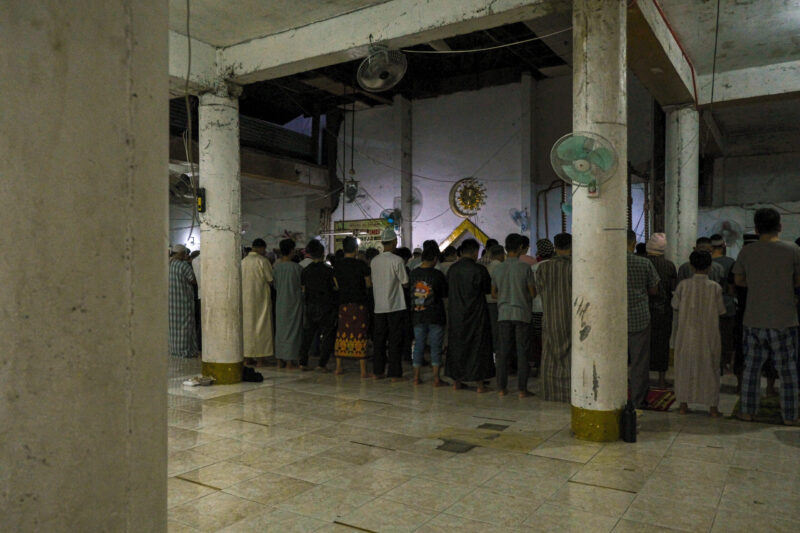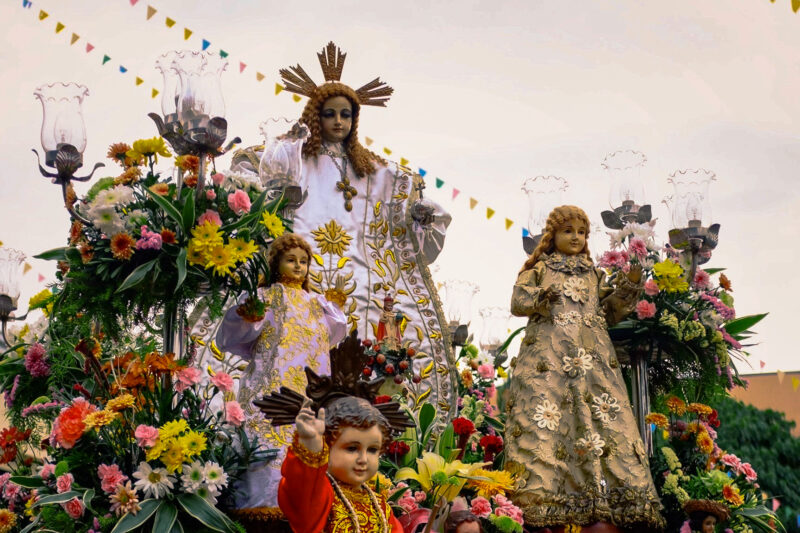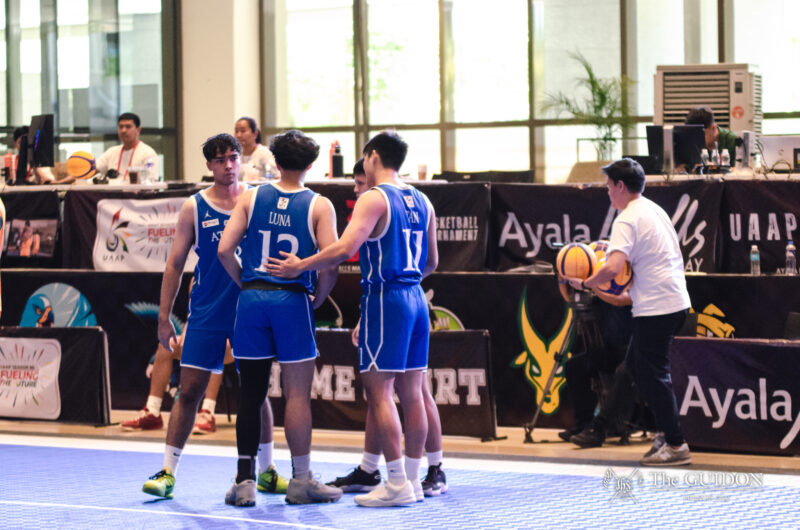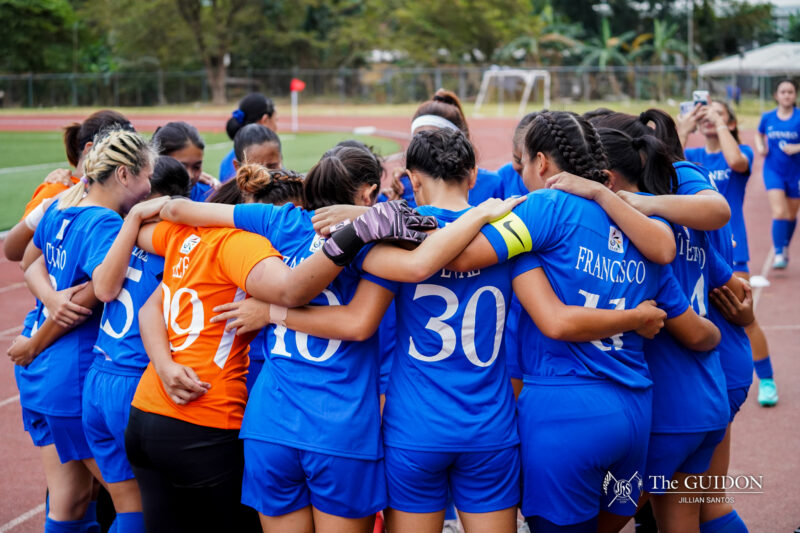“EDSA WAS a party!” Philosophy professor Agustin Rodriguez, PhD says as he recalls his experience of the 1986 EDSA Revolution. Despite being immortalized through monuments and textbooks, the memory of EDSA has continued to fade into a mere holiday.
Narratives taught at school are simple ones: The late dictator Ferdinand Marcos cheated in the 1986 snap elections, and soon after, people took to EDSA at the call of a Cardinal, some military officers, and the widow of a senator. Then the dictator unceremoniously fled. However, what many think of as a monumental event is more than just the space it takes up in history books.
Beyond the solemnity of its image were moments of comical absurdity. The EDSA revolution saw Filipinos from various walks of life gathered to enjoy a picnic, exchange laughter, and crack jokes—all while toppling a dictatorship. Before cars packed EDSA as we know it, the streets were flooded with a deluge of humanity fighting bravely against years of authoritarianism. Each individual bore a struggle and yearned for change.
The streets saw it all—the lost tanks lazing through boulevards, groups chanting parodical songs poking fun at a despotic regime, and many other surreal tales. In these moments, the people found traces of hope amidst trying times.
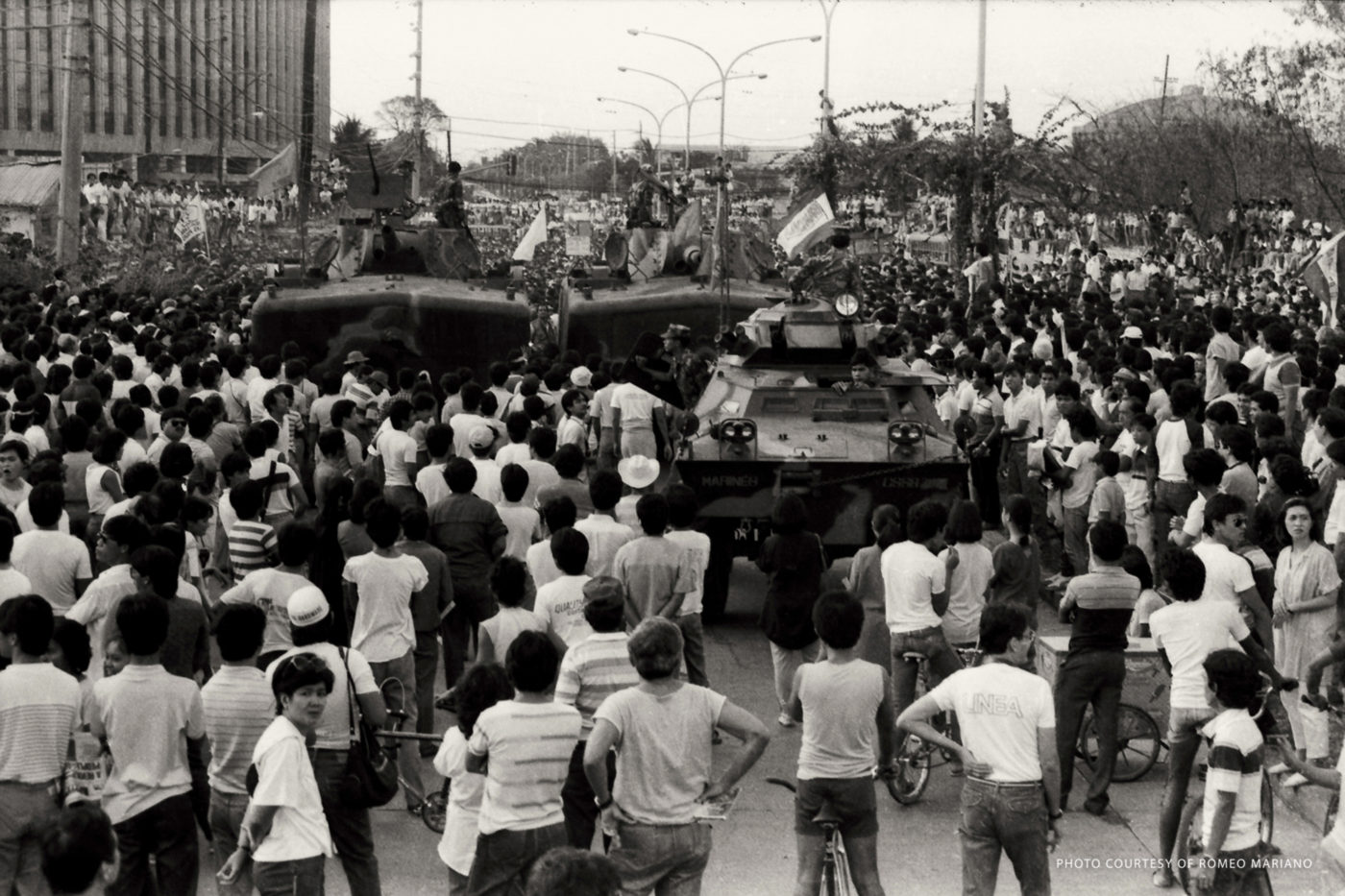
More than a monument
Rodriguez, then a third-year AB Philosophy student in Ateneo, was recovering from hepatitis the month of the EDSA Revolution. However, on the morning of February 22, 1986, he woke up feeling well—as if he was meant to go somewhere. That night, he heard Jaime Cardinal Sin on the radio, calling for people to storm the streets and protect Camps Aguinaldo and Crame, where the failed mutineers led by Juan Ponce Enrile and Fidel Ramos retreated. “Cardinal Sin came out and said, ‘Go to EDSA, help people there,’ and I’m like ‘Shet, this is it?’” Rodriguez recalls.
Hearing the same call, Patricio Abinales, PhD, also joined the crowds in EDSA. He recalls how clueless the Camp Crame guard was when the protesters suddenly gathered around the camp and started giving him bread.
Even the Marines were confused, according to Abinales. The battle-scarred troops were plucked from the frontlines of Zamboanga, sent to Manila, and told to fight the “communists.” Instead, what faced them were serene nuns and perfume-scented kolehiyalas from Ateneo and Maryknoll (now Miriam College) giving them roses and food.
Across the city, a tank was making its way through Manila’s roads with a mission to bomb a Channel 4 (now ABS-CBN) tower held by anti-Marcos rebels who reclaimed the station from government control. The driver, unfamiliar with the city, tried asking Abinales’s group for directions. Upon realizing he was on government orders, they intentionally gave the wrong route.
The tank ended up near the tower of the Department of Energy, thinking it was the target. “Lumabas [‘yung University of the Philippines (UP) classmates ko], ‘huy, hindi kami ah, ‘yun ‘yung Channel 4! ‘Wag mo kaming bobombahin!’ Tapos pinagalitan naman nila ‘yun. E ‘di napikon ‘yung tank commander, umuwi na lang.” Abinales recalls.
(My UP classmates went out, ‘Hey, not us, Channel 4 is over there! Don’t bomb us!’ Then they scolded the soldiers, who got irritated and went home instead.)
Through day and night, Filipinos never left the streets—some even brought their children with them. Despite the fearful atmosphere, Rodriguez shares that it felt like camping to him. “[You] would be there and then there was this buoyancy—the buoyancy of hope,” Rodriguez reminisces.
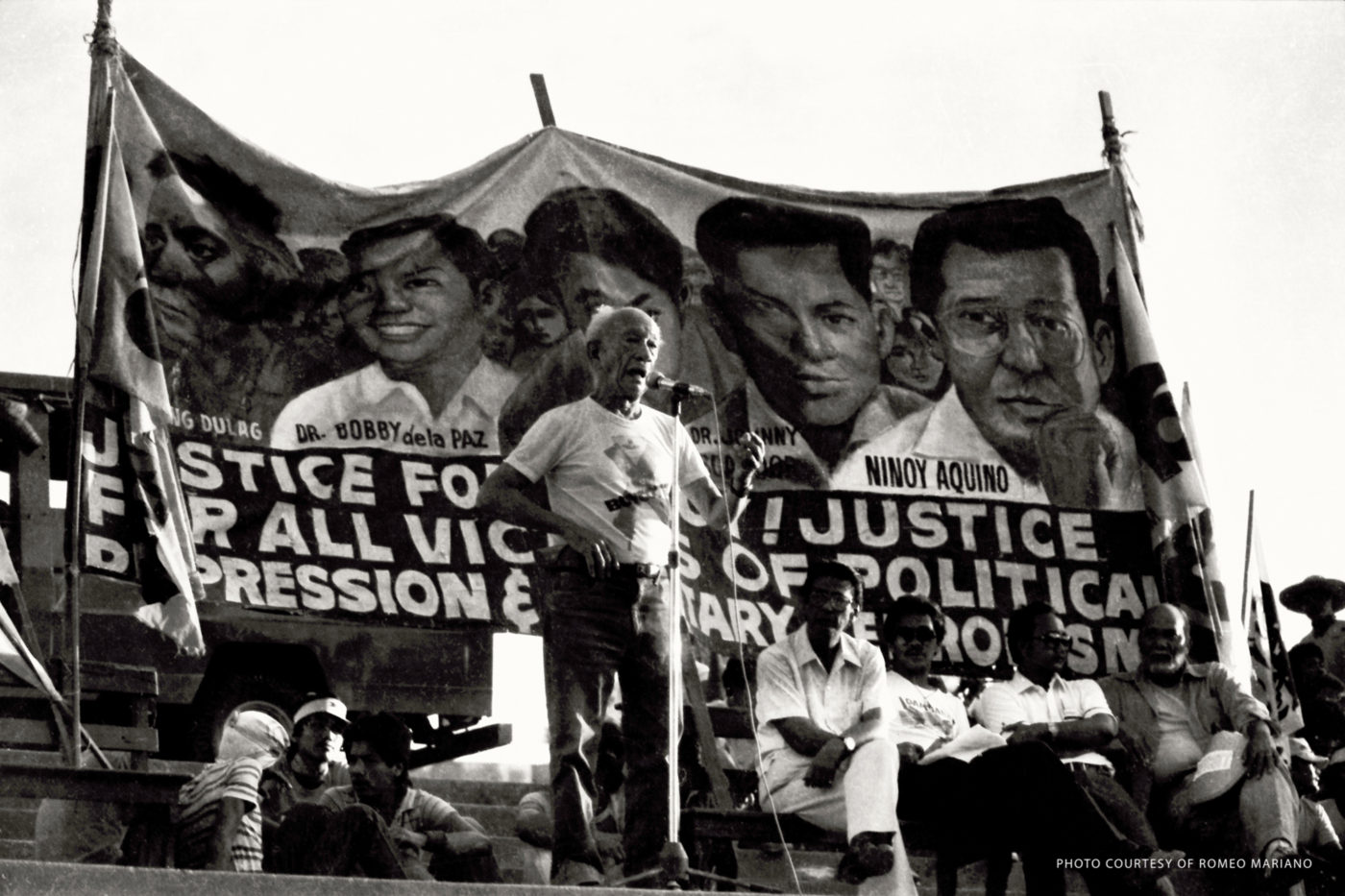
Even before the gatherings at EDSA, moments of levity and laughter shone through the stories of the protesters. Such instances can even be found in the 1971 Diliman Commune, which started when UP students boycotted their classes and erected barricades in solidarity with jeepney drivers. The protest saw blood spilled on campus as students defended academic freedom. Amid the violent tension, Abinales remembers how the audio of Marcos’s scandalous affair with American actress Dovie Beams played over the university’s radio station in one of the days of the Commune.
“Everybody started laughing including the police, so nagalit si Marcos [and ordered], ‘Hanapin niyo na ‘yang lintik na radyo na ‘yan!’ (Everybody started laughing including the police, so Marcos got mad [and ordered], ‘Find that damn radio!’)” Abinales shares.
Through the years of the oppressive Marcos regime, these surreal experiences helped Filipinos survive day by day. News of countless desaparecidos—sudden disappearances of dissidents, journalists, and ordinary citizens—and deaths continued to spread. Rodriguez remembers how the fear of being the next desaparecido casted a shadow that always felt so real and close. Shared amongst the people, these secretive half-smiles and rare moments of humor shed a little light amidst the surrounding darkness. These momentous glints stood for the yearning that someday, people can laugh freely again. “You cannot separate humor from hope,” Rodriguez muses.
Subversion in satire
The People Power Revolution was the culmination of the mass resistance and struggle against the years of plunder by the powerful and abuses by the military. According to Crispin Maslog, PhD, author of Never Again! To Martial Law, the years prior to the revolution saw extensive press censorship by the military. The limitations on the media forced many to use jokes as a safe yet subversive form of expression.
News critical of the regime was passed on by word of mouth and then through typewritten news slips circulated in activist circles. Eventually, anonymous writers started sending out untraceable newsletters. Aside from the unfiltered news, these papers also contained jokes that targeted Marcos, his cronies, the first family, and the military. Those jokes would be one of the tools employed to undermine and overthrow the dictatorship.
Maslog notes that these jokes, which often came from the middle class, found their way into the subversive media that were produced by activists. Even opposition senator Ninoy Aquino was known to crack jokes about the regime while in exile. “In the beginning, tahimik lang… In the second year, [the citizenry] started complaining in private,” Maslog shares.
Even after the 1986 EDSA Revolution, the use of humor as subversion continued. Wataru Kusaka, PhD, an associate professor in Nagoya University’s Graduate School of International Development, notes that satire evolved with technology and was successfully employed by incumbents and opposition alike. He cited former President Joseph Estrada’s use of “Erap jokes” in his campaign. These jokes were then used against him by a disgruntled middle class that employed texting to share jokes and organize protests, ending in another EDSA Revolution.
Humor in the Philippines has proven its use beyond mere catharsis as a political tool for social change. It has remained a constant force in the public sphere, with every generation embracing satire for both the laughs it brings and power it holds. Although satire is effective in pulling support and subverting authority, Kusaka says that its users must be careful to avoid polarizing people and instead use humor to unite them.
Continuing the punchline
Though army tanks no longer confront students and nuns in EDSA, the Filipinos’ wit in undermining repressive regimes through comedy remains strong. Social media has allowed citizens to further poke fun at officials and ongoing issues through posts and political memes, ranging from commentaries, jokes, to edited images of political figures.
A number of social media pages also regularly satirize the administration, such as the amusingly-named “Malacañang Events and Catering Services,” which has drawn flak from personalities such as former presidential spokesperson Salvador Panelo.
Outside of online platforms, humor also plays a part in physical protests. One instance was when activists held a “Grand Mañanita,” a jab at former Philippine National Police (PNP) chief Archie Gamboa’s defense of current PNP Chief Debold Sinas’ birthday “mañanita” on May 8, 2020. Along roaring political calls were cheering laughters from the crowd as speakers and artists humorously lashed at the administration or dressed up as Sinas.
These continued displays of dissent through humor is only further proof of another well-known aspect of the Filipino—that there is always room for laughter. As Rodriguez puts it: “We’re Pinoy, so we can’t not be funny, right?”
Thus, in remembering EDSA, we may also recall the buoyancy of its spirit; it may have been called “bloodless” but it certainly was not lifeless. The legacy of EDSA may have become more tangled as the years passed, but it definitely goes down as the day Filipinos showed Marcos who had the last laugh.

